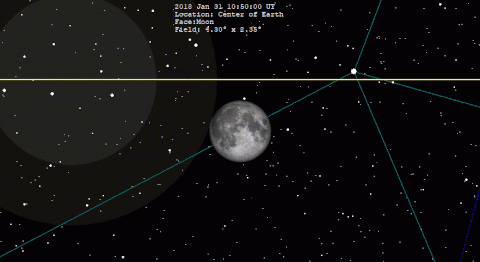January 31st’s Total Lunar Eclipse
A total lunar eclipse took place on January 31, 2018. The moon appeared as supermoon and perigee was on January 30. The previous supermoon lunar eclipse was in September 2015.
As it was also a blue moon (being the second full moon of January 2018), it was referred to as a “super blue blood moon“; the “blood” comes from the color of the moon during the lunar eclipse. This coincidence last occurred on December 30, 1982 for the eastern hemisphere, and otherwise before that on March 31, 1866. The next occurrence will be on January 31, 2037, one metonic cycle forward (19 years).
How it Occurs?
A lunar eclipse occurs when the Moon passes within Earth’s umbra (shadow). As the eclipse begins, Earth’s shadow first darkens the Moon slightly. Then, the shadow begins to “cover” part of the Moon, turning it a dark red-brown color (typically – the color can vary based on atmospheric conditions). The Moon appears to be reddish because of Rayleigh scattering (the same effect that causes sunsets to appear reddish) and the refraction of that light by Earth’s atmosphere into its umbra.
The following simulation shows the approximate appearance of the Moon passing through Earth’s shadow. The northern portion of the Moon is closest to the center of the shadow, making it darkest and reddest in appearance.
Source: Wikipedia






